Workshops – workshops – workshops. Let the REAL ID work begin!
Picking up from where we left off in June – we have just completed our FSC placements and we were back to AMC to take the plunge into the exciting workshops lined up for us.
Bryophytes
Bryophytes were on the agenda first and we had the privilege to enjoy a presentation from one of the best experts in this challenging field: Dr.Fred Rumsey. After an introduction to the anatomy and life cycle of bryophytes we had a run through of the main British moss and liverwort families.
The second day brought more excitement, we were off to do some field work and surveying! The group was heading off to Abbey Wood in southeast London to visit an area which hasn’t been surveyed for 20 years. We all agreed it would be interesting to see how this Local Nature Reserve will fare in this survey after 20 years. Fred helped us with identification right there and then and those bryophytes which proved to be more challenging have been collected and brought back to AMC. On Wednesday we spent the whole day identifying the samples under the microscope. Some of these organisms are so difficult to separate that we needed compound microscopes to examine fine details and features. Overall, our survey list added up to 60 odd species with a few new records for the site as well.
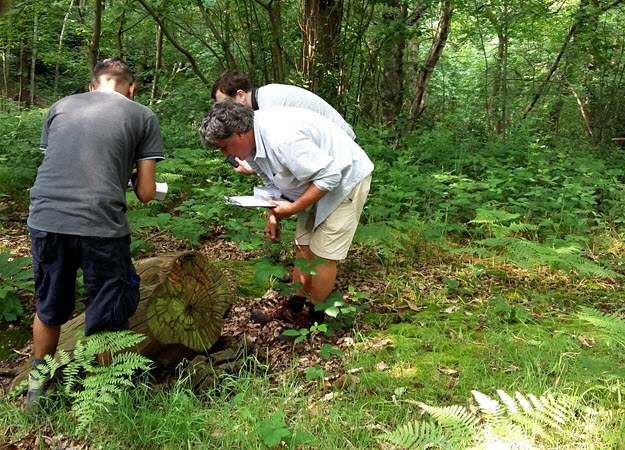
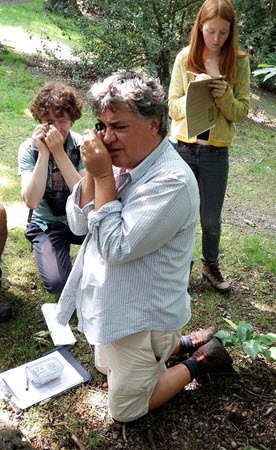
Ferns and Horsetails
If that was not enough, on Thursday we were introduced to another ancient plant group: the ferns and horsetails. Compared to the vast number of moss species (1,100 sp. for Britain) ferns and horsetails appeared to be more manageable with 70-80 species.
Following up the Bryophytes Workshop we also attended the Integrated Pest Management course (IPM). The danger and risk of pests’ damages to the collections is very real in every museum therefore it is vital that everyone working with valuable treasures is knowledgeable about pest control. We were presented with various pest specimens collected in the Natural History Museum and were asked to identify them. During the afternoon we had a trip around the museum looking at certain challenges (architectural arrangements etc.) that pest control management has to face.
It was during this week when the ID Trainers took part in another BioBlitz, this time it was held at Tring. We were greeted at the station by Abbey one of the education officers. The whole event was organised very well with specific time slots for every activity. All five of us had the opportunity to take part in pond dipping, mini-beast hunting, small mammal trapping. It was a very enjoyable day – albeit rather a gloomy one – with some specimens collected for later identification. The constant flow of people ensured that we had enough time to talk to everyone.
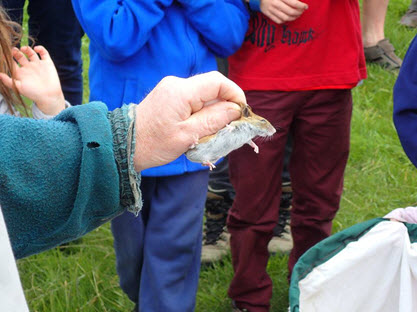
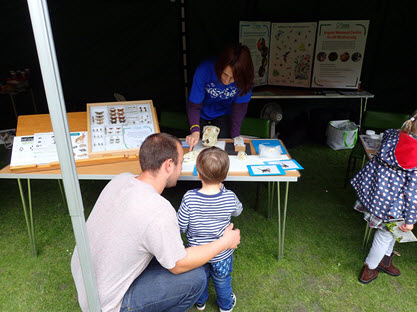
Working here at the Natural History Museum comes with many advantages and one of them is that whenever we have some free time we can attend any of the free lectures. One of these talks I attended was on climate change and reptile conservation, which featured many fascinating research studies.
Freshwater Invertebrates
In the last week of June we have ventured into the territory of freshwater invertebrates for a week under the guidance of Steven Brooks. After an introduction to the group we went outside to the Wildlife Garden to collect samples from the ponds. The highlight for me was the use of a huge TV screen connected to the microscope. This way, Steven could easily explain and demonstrate the determining features of specific species. We have covered many different genus and even got the opportunity to prepare slides of small midges. These tiny organisms require special treatment, their heads need to be separated from their body first, and then the head needs to be in a certain position before the cover slip is put on. This is to do with the jaws of the midge needing to be clearly visible as it has very important identification features.

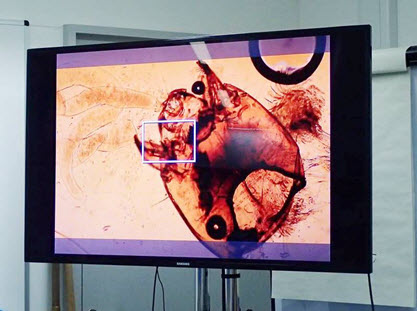
I feel that we have all learnt a tremendous amount during these workshops; every one of them makes us so enthusiastic and encourages us to go out and look for mosses, lichens, plants, earthworms, insects in our spare time. The experts and lecturers are always more than happy to help with identification; we are truly privileged to have them so close by!
We are also very much looking forward to the upcoming Diptera, Lepidoptera (moths) and Hymenoptera workshops during the following months!
Written by Krisztina Fekete
